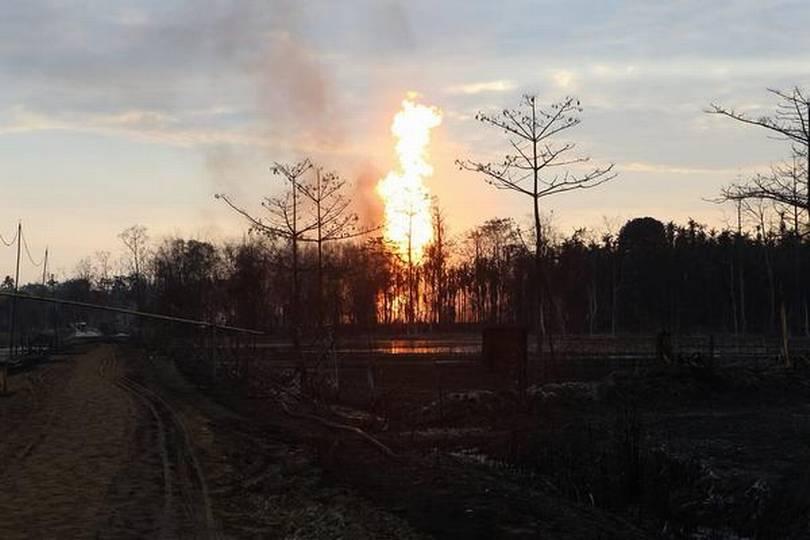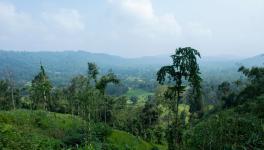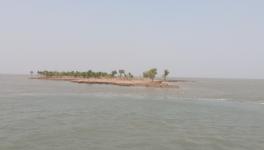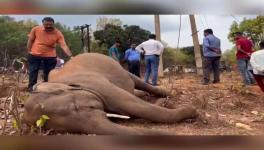Oil and Natural Gas Extraction is not ‘Mining’, Says Wildlife Conservation Panel

New Delhi: A wildlife conservation body under the Narendra Modi government has exempted oil and natural gas extraction from the definition of ‘mining’ activity, paving the way for rampant hydrocarbon exploitation in and around some of the densest forests of India which are also extremely rich with flora and fauna. The move, which is amongst a series of reforms in environmental regulations vis-à-vis the hydrocarbon sector, will potentially benefit corporate bigwigs in the oil and natural gas industry.
In a meeting – the details of which were released on October 8 – the Standing Committee of the National Board for Wildlife (NBWL) provided final clearance to six proposals to divert forest lands from the Trishna Wildlife Sanctuary in Tripura after deciding that hydrocarbon extraction cannot be considered as ‘mining’ activity.
The exemption was provided after top judicial officers of the country, including the Advocate General of Tripura and the Solicitor General of India, respectively, opined that hydrocarbon extraction could not be construed as ‘mining’ either under the Mines and Minerals (Development & Regulation) Act, 1957 – popularly known as the MMDR Act – or under a Supreme Court order of 2006 which prohibits mining in close proximity of protected areas.
“What has been conveniently ignored while exempting oil and natural gas extraction from the definition of mining activities is the Mines Act, 1952. This Act defines oil extraction as a mining activity,” environmental lawyer Ritwick Dutta told NewsClick.
The Mines Act, 1952, which NBWL allegedly ignored in arriving at its decision, defines mining as “any excavation where any operation to search for or obtain minerals has been or is being carried on and includes all borings, boreholes, oil wells and accessory crude conditioning plants, including the pipe conveying mineral oil within the oilfields.”
As per the NBWL standing committee meeting minutes, the Solicitor General of India opined that extraction of natural gas and oil, which includes exploration and development, is “not a mining activity compared to a traditional open cast mining carried out upon large tract of land”.
The Solicitor General further added that oil and natural gas exploration could not be considered as mining in terms of the order issued by the Supreme Court in August 2006 in the famous Godavarman Thirumulpad case whereby mining activities had been prohibited, as an interim measure, within a 1-km radius of all protected areas including National Parks, Wildlife Sanctuaries and Forests.
“The spirit behind the Supreme Court order of August 2006 has not been considered in exempting hydrocarbon extraction from the definition of mining. By prohibiting mining activities within a 1-km radius of protected areas, the order seeks to create a safety zone or buffer zone wherein no disturbance should take place for the sake of wildlife and ecology.
The Baghjan oilwell blowout incident, which took place last year, is a case in point. The oilwell is located at a distance of less than 1 km outside the boundary of Dibru Saikhowa National Park, a protected area, where most of the devastation took place,” added Dutta, whose organisation LIFE (Legal Initiative for Forest and Environment), has been selected for the Right Livelihood Award for 2021.
The Supreme Court has formed an expert committee to analyse, amongst other issues, lapses, if any, in allowing public sector major Oil India Limited to extract hydrocarbon very close to the Dibru Saikhowa National Park in Baghjan, Assam. Therefore, NBWL's decision to facilitate oil and natural gas extraction activities in close proximity to protected areas by removing it from the ambit of the definition of mining has also been termed as premature.
Notwithstanding the devastation caused by the Baghjan blowout to the ecologically fragile rainforests of Assam, which also resulted in displacement and loss of livelihoods of a large number of local communities, the Modi government has gone all out in the recent past to relax environmental norms for exploitation of hydrocarbons.
In January 2020, before the Baghjan blowout, the Modi government had exempted oil and natural gas exploration activities from conducting public hearings, carrying out environmental impact assessment studies and obtaining Environmental Clearances from the Union Ministry of Environment, Forests & Climate Change.
In May 2020, shortly before the Baghjan blowout, the Union Ministry of Environment, Forests & Climate Change had cleared Oil India Limited's (OIL) proposal for seven exploratory wells outside the Dibru Saikhowa National Park without a Biodiversity Impact Assessment Study. In August 2020, even as the fire from Baghjan blowout was still raging, a public interest litigation was filed in Gauhati High Court alleging that the Modi government had exempted the aforementioned project from environmental clearance in a ‘retrospective’ manner.
Earlier this month, the Modi government has sought to exempt hydrocarbon exploitation from the purview of forest clearances through a proposed amendment of the Forest (Conservation) Act, 1980, whenever it is undertaken with the help of Extended Reach Drilling (ERD) technology.
It has been argued that these reforms, which can benefit corporate hydrocarbon firms, will also result in irreversible devastation of the ecology.
Simultaneously, the legal competence of NBWL has also been questioned in exempting oil and natural gas extraction from the definition of mining. Only the Central government is empowered to exempt any activity from the Mines Act, 1952, which has been put in place for the regulation of labour and safety in mines.
“Where was the Doctrine of Proportionality, vide which it is legitimately expected that administrative action ought to bear a reasonable relationship to the general purpose for which power has been conferred when the wildlife board exempted hydrocarbon extraction from the definition of mining? It seems, aspects of environmental and ecological conservation, the purpose for which the board has been constituted in the first place, were not considered in arriving at this decision,” said Gauhati-based environmental lawyer Debajit Das.
In January 2019, NBWL had provided conditional clearance to public sector major Oil & Natural Gas Corporation (ONGC) for diverting forestland from the Trishna Wildlife Sanctuary in Tripura for its hydrocarbon extraction project. The proposed construction activities for the Trishna gas project included the drill site, waste pit, gas transportation pipelines and approach roads against which ONGC had sought wildlife clearance for six different parcels of forest land.
NBWL had approved the six proposals albeit with a set of conditions meant for environmental mitigation. The NBWL had also ruled:
“The State Government [Tripura] shall obtain legal opinion from the Advocate General on that extraction of natural gas / oil cannot be considered as mining in terms of Hon’ble Supreme Court order dated 4.8.2006 in IA-1000 in WPC-202/1995 (Godavarman vs. Union of India). The Ministry [Ministry of Petroleum & Natural Gas] shall also seek the legal opinion from the Solicitor General of India on similar lines.”
As per experts, a buffer or safety zone even outside protected areas, where commercial activities including mining are prohibited, helps avoiding man-animal conflict because it is impossible to restrict movement of wild animals within manmade boundaries of parks and sanctuaries.
Another case in point is the Kaziranga National Park. An expert committee formed by the Assam government had recommended the delineation of nine corridors, beyond the boundaries of the Kaziranga National Park, to enable free to-and-fro movement of wild animals to the nearby Karbi Anglong Hills.
Inhabitants of Kaziranga National Park – including tigers, elephants and rhinoceros – migrate to the Karbi Anglong Hills during the annual floods in order to seek refuge. However, their movements are obstructed by National Highway (NH) 37, which fragments the park into two zones, and the commercial activities abutting the highway.
Following a Supreme Court order in April 2019, the Assam government has also imposed a ban on all mining activities in the immediate vicinity of the Kaziranga National Park in order to help wild animals move about freely. The government of Assam had issued the following statement on April 30, 2019:
“It is hereby ordered that all types of mining and related activities along the southern boundary of the KNP [Kaziranga National Park] and in the entire catchment area of rivers, streams and rivulets originating in the Karbi Anglong Hill Ranges and flowing into the KNP is hereby banned forthwith.”
The writer is an independent journalist.
Get the latest reports & analysis with people's perspective on Protests, movements & deep analytical videos, discussions of the current affairs in your Telegram app. Subscribe to NewsClick's Telegram channel & get Real-Time updates on stories, as they get published on our website.
























